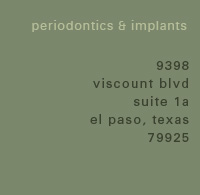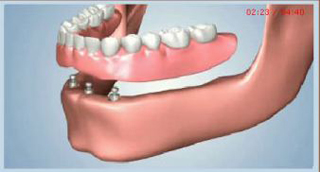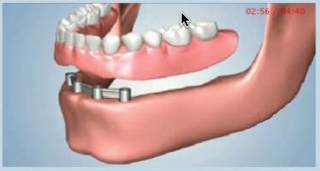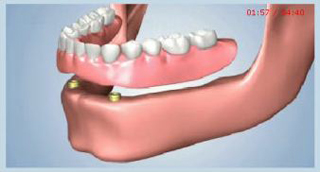- general information
- patient information
- Periodontal Overview
- ––––––––––––––––––––––––––––––––––
- Periodontal Disease and Heart Disease
- Diabetes and Periodontal Diseases
- Periodontal Disease Risk Factors
- Periodontal Complications
- Oral Cancer
- • Biopsy
- Maintaining Periodontal Health throughout a Woman's Lifetime
- Other Diseases and Their Relationship to Periodontal Disease
- Heart Disease: Precautions to be Taken Before Dental Treatment
- Poor Nutrition and Periodontal Disease
- ––––––––––––––––––––––––––––––––––
- What is "Good Oral Hygiene"?
- How to Brush
- How to Floss
- How to Care for Sensitive Teeth
- Hygiene Products
- • Toothbrush Care
- ––––––––––––––––––––––––––––––––––
- New Patient FAQs
- First Visits FAQs
- non-surgical periodontal care
- periodontal therapies
- Traditional Pocket Reduction Therapy
- • Bone Grafting
- ––––––––––––––––––––––––––––––––––
- PerioLase™ LANAP Therapy
- ––––––––––––––––––––––––––––––––––
- Cosmetic Surgery to Improve the Appearance of Your Smile
- • Crown Lengthening to Improve the Esthetics of Your Smile
- • Soft Tissue Grafting to Address Gingival Recession (Root Coverage Grafting)
- Platelet Rich Plasma (PRP)
- Crown Lengthening to Repair a Damaged Tooth
- Exposure / Bracketing of Impacted Tooth
- • Procedure Description for Exposure/Bracketing of Impacted Tooth
- ––––––––––––––––––––––––––––––––––
- Pocket Reduction Surgery FAQs
- Other Therapies FAQs
- dental implants
- Introduction to Dental Implants
- • Single Missing Tooth
- • Two or More Missing Teeth
- • Current Denture User
- • Benefits of Dental Implants
- ––––––––––––––––––––––––––––––––––
- CT Scanner & Comprehensive Implant Planning
- Conscious I.V. Sedation: Is It Right for You?
- ––––––––––––––––––––––––––––––––––
- Socket Preservation Techniques
- Ridge Augmentation and Bone Grafting
- Sinus Graft
- Platelet Rich Plasma
- Routine Implant Maintenance
- our doctors & staff
- office information






Home
Dental Implants
- Introduction to Dental Implants
- • Single Missing Tooth
- • Two or More Missing Teeth
- • Current Denture User
- • Benefits of Dental Implants
- CT Scanner & Comprehensive Implant Planning
- Conscious I.V. Sedation: Is It Right for You?
- Socket Preservation Techniques
- Ridge Augmentation and Bone Grafting
- Sinus Graft
- Platelet Rich Plasma
- Routine Implant Maintenance
Current Denture User: Missing All Teeth in Upper or Lower Jaw(s)

Patients who use full dentures present a challenging problem to the dental profession and efforts are always being made to discover a better solution for edentulous patients and their ever-present difficulty with normal chewing. Many patients can initially function at a reasonable level with full dentures, once they become accustomed to the reduced forces that are related to chewing with dentures and the diminished ability to taste food and detect the texture of the food. But with time, almost all denture patients begin to have difficulty eating without use of denture adhesives to stabilize their dentures that progressively become less stable and comfortable as time passes. Fortunately, advances in the field of dental implant surgery now provide a welcome option for denture patients to once again function in their daily lives with confidence and comfort.

There are two primary options available for edentulous patients who want implants. The first option is the use of a full denture that attaches to multiple implants with mechanisms that actually anchor the denture to the implants, providing strong retention and steady support for the otherwise loose denture system. The second option is primarily reserved for patients who have a great deal of bone available after losing their teeth. In these cases, multiple implants can be used to support a full arch bridge that replaces all of their upper or lower teeth with porcelain crowns. In both options, implants are placed in key positions, taking the place of the patient’s previous roots and providing the foundation for the new prosthesis to attach. In addition to looking and functioning like natural teeth, implant-supported full bridges or implant supported dentures are designed to be long lasting replacements for your natural teeth. Implant-supported bridges and dentures are more comfortable and stable than conventional dentures, allowing you to function with a more natural biting and chewing capacity. The implants are actually anchored in the bone and they provide a solid support system to resist excess movement of your denture or bridge.

Did you know that the only thing that holds a conventional denture in your mouth is the volume and shape of your original bony ridge, your tongue and muscle control, and a little suction in your upper jaw? There is no suction effect in a lower denture and as the bony ridge deteriorates, the only stability comes from the steadily diminishing ridge, your tongue, and your cheeks. Conventional dentures make it difficult to eat certain foods because chewing forces are decreased from 150 lbs. per square inch with natural teeth, to less than 30 lbs. per square inch when chewing with a denture.
In addition to the predictable stability provided by implants, the strength and bulk of your jawbone is preserved by the continual stimulation of the bone by the dental implants that stress the bone like your natural roots did originally. Studies have clearly shown that as stress is exerted by the roots of teeth or by dental implants, the surrounding bone in your body is stressed, becoming stronger and more dense. With conventional dentures, the bone receives no stress after the teeth are extracted, so the bone quickly deteriorates due to a lack of stimulation. Dentures are primarily held in place by the shape and bulk of this remaining bone and as it slowly dissolves away, the retention and stability of the denture also disappears. Dental implants actually integrate into your jawbone, helping to keep the bone healthy and intact because they direct stress and strain to the jawbone, continually directing the bone to become dense enough to bear the load that is exerted by chewing your food.
How will the implants be placed?
First, the implants (small titanium cylinders or screws that look like a tooth root) are surgically placed into your jaw by carefully preparing a bed in the bone and then threading the implants into the bone. Many times the gum tissue is simply sealed back over the top of the implants and in other cases, a small extension will visible directly over the top of the implants. Over the next three to four months, the implants and the bone are allowed to bond together to form a series of anchors for your denture of bridge. During this time, a temporary tooth replacement can be worn over the implant site to allow normal chewing and esthetics.
When the healing process has been completed, the second phase of treatment involves steps that prepare the implants for the restorative process with your dentist. In cases where the implants were covered by the gum tissue, a second minor surgical procedure is necessary to uncover the implants and attach an extension that will be used to support the new prosthesis. This step is bypassed if the implants were not covered at the time of the original surgery. Your dentist will attach a metal post called an abutment to each implant and this completes the foundation on which your new crowns or denture will be constructed.
Depending upon the type of replacement teeth planned by your dentist, the connecting device that will hold your new teeth will be actually attach to the implants, or it will be clipped to a bar or round ball anchors that the denture snaps on and off.
Finally, your general dentist will fabricate full dentures or fixed bridges that will be attached to your implants or the connecting device. You will soon experience restored confidence in your smile and your ability to chew and speak.
9398 Viscount Blvd, Suite 1-A | El Paso, TX 79925 | Tel 915-598-6702 | Fax 915-593-7478
Home | General Information | Patient Information | Non-Surgical Periodontal Care | Periodontal Therapies | Dental Implants | Our Doctors & Staff
Contact Us | Referring Doctors | Disclaimer | Sitemap | Periodontic Website Designby PBHS 2012©